A Bahamian bonefish’s work/life balance is pretty simple. Swim into water so skinny that sharks and barracuda can’t eat you, then spend the rest of the tide grubbing around for food. Keep those big bonefish eyes peeled for osprey or other overhead predators. Repeat with each flood. Remember, knee-deep is too deep; that’s where the bad fish live.
For the angler trying to take advantage of a bonefish’s propensity to seek out those extreme shallows, the omnipresent complication is wind, not to mention clouds – spiteful scudding clouds that block out the sun for long minutes — often just as you’ve spotted a fish or two. When the sun reappears, they’ve vanished, like a fart in the wind, to quote Warden Nordon in “The Shawshank Redemption.”
It was under these conditions that I recently skulked along a foam-streaked flat on a DIY trip to Acklins Island in the southern Bahamas. I had just messed up yet another shot at a pair of decent bones cruising the edge of a sandbar in water slightly more than ankle deep. A 20-knot headwind forced my fly to crash-land in a heap of fluorocarbon ten feet off the mark. On the next cast, I overcompensated, hauling with a grunt and splattering my line too hard. The fish torpedoed off the flat.
Then I noticed a lee behind a narrow key of mangroves 200 yards away. Maybe I could find fish there, out of the wind, and get off a reasonably accurate cast. I walked off the sandbar into a trough that went beyond my knees. Out of habit, I scanned in front of me looking for cruising bonefish, but there was none to be seen. The reason why became obvious.
Heading in my direction with undulating sweeps of its tail, swam a five-foot long shark. I guessed it was a lemon, though I am no Quint. All I knew is that suddenly, I felt … well, uncomfortable.
But I knew what to do. According to long-held bonefishing cannon, if a shark gets too close, simply stomp your foot. The sound wave will prompt the shark to turn its cartilaginous tail and flee. Last year, on Inagua Island 100 miles to the southeast, I tested this flats-hack firsthand. I stood knee-deep in a gentle surf fighting a big triggerfish, when I spotted a four-foot shark moseying my way. When it got within a few rod lengths, I stomped. The shark streaked away looking almost cartoonish in its flight. That is until it found my hooked triggerfish, which it bird-dogged until I had to break it off. But the point is it worked.
This time, however, felt different. First, there is an obvious difference between a four-foot and five-foot shark, and it’s not just 12 more inches. It looked bulkier, its pectorals a good two feet between tips. And it appeared, how should I put it, more confident, perhaps unwilling to yield to anything in its way. Especially my measly foot clad in a flats boot.
Nevertheless, when the shark cruised within 50 feet of me, I made my move, stomping once as hard as I could in the soft sand. On cue, the shark bolted … directly toward me.
I’m not sure how fast a lemon shark can swim, but I can attest that this big hoss was eye-blinkingly quick. In what felt like less than a second, it closed to a rod length away and was not stopping. So, I did what any brave fly angler would do, namely thrust my eight-weight into the water like a fencing foil, prepared to duel with my finned nemesis. Oh yeah, I also continued stomping like a crazy person while shrieking in terror.
This triple threat of goofiness worked. The shark did an about face and zoomed off, a brownish boil appearing in its wake. No, it wasn’t from me.
I stood there trembling for a minute or two, thinking that the shark must have somehow made a mistake — that it intended to zig away from me, but zagged instead. I took a deep breath, readjusted my buff and otherwise composed myself, then went back to cursing the wind between flaccid casts to skittish bones.
After I got home, I mentioned my shark encounter to a friend and former colleague who worked for The New York Aquarium. When I explained my theory that the shark mistakenly fled in the wrong direction, he became dubious. “Sharks don’t make those kinds of mistakes,” he told me. Hmm. So then I reached out to Vince Tobia from Cattaraugus Outfitters, who spends more time flats fishing than anyone I know. I asked him point blank if he thought the shark was coming for me.
His answer was a surprising yes.
In an email, Vince wrote: “My guess is that when the shark was far away and you stomped, the sound/splashing attracted it. It heard noise or felt vibration and came to investigate. I usually don’t stomp until they are much closer, maybe 15-20 feet. At 50 feet, he probably didn’t even see you, just heard or felt something and thought ‘food.’”
In other words: A little shakin’, little tenderizing, down you go.
So, what I learned, I guess, is next time I should hold off a little longer before I unleash a shark-fleeing stomp. This smacks of the old adage of not running when a grizzly charges, which, while I’m sure is true, sounds soooo much easier said than done. Maybe I’ll wait until I see the shark’s eyes. A shark has lifeless eyes, black eyes, like a doll’s eyes … Maybe I do have a little Quint in me.







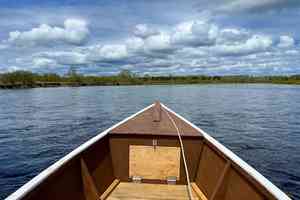
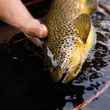




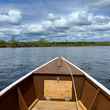

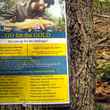
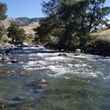

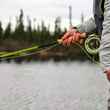

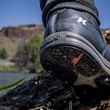



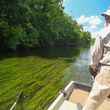


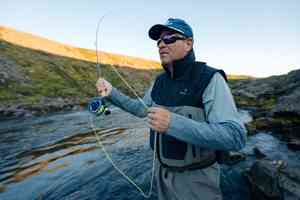


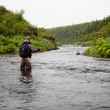

Comments
Steven Shirley replied on Permalink
It was probably going to charge you and have a bite! I had a 5’ plus bull shark blind side me at a Bahamian out island two months ago and almost take off my foot. I see small sharks all of the time and stomping or throwing mud in front of them works. Unfortunately, this came from behind me and into the sun. I was fortunate not to get knocked over and was able to kick him off with my right leg while he was biting on my calf and foot on the left. With amazing fortune, his nose was pushing into my leg and his bottom teeth couldn’t gain purchase, but did give me a crush injury to my foot and a nice gash needing stitches in my calf. I recommend carrying Quikclot in your kit with gauze and medical tape. It is the coagulant I used to staunch the bleeding while driving up the island to see the only doctor available. I waited three weeks and, with a waterproof bandage, went out and fished again and had a banner day. Pretty spooky though!
Richard Swan replied on Permalink
I have wade fished Abaco flats for bonefish from mid fall to late spring 3-5 times a week for the last 20 years. I have encountered hundreds of sharks. Here is a short summary of my experience. As a rule I wade in water from high ankle to mid calf deep. Bonefish favor this depth and they are much easier to see than in knee deep water. The sharks that frequent these depths generally range from 2' to 4' in length. They mostly are attracted to my foot steps and generally approach from the side or behind me out of curiosity and swim at a leisurely pace. As a general rule it is easy to scare them away by walking toward them and raising my arms to increase my profile. Occasionally I encounter a more determined (aggressive) one which can generally be spooked if I stamp a foot. I only use this technique if they are within 20 feet. On rare occasions I have been charged by a 3' to 4' shark that ignored these defensive maneuvers, in those cases I have slapped a rod down directly toward the head at the last second and that worked. Another defensive technique which has worked well is to grab a hand full of sand or mud and throw it at them. This needs to be done before they get too close. One thing to keep in mind is that sharks will follow and approach from directly behind you. I have had them come within a foot behind me and then spook with a splash like a plunging a garbage can cover suddenly into the water. This caused a heart stopping reaction on my part. Certain flats seem to be particularly thick with sharks while other areas not so much. That said I always am alert on the flats. As a general rule stay in water knee deep or less. Bonefish love this depth and they are much easier to see. My basic rules: 1. Look around and behind you often. 2. Be particularly vigilant if you have to cross a Chanel with deeper water. 3. Be aggressive on your defense. 4. When sharks start to enter a feeding frenzy their swimming speed increases and their intensity increases. Time to be more cautious! 5. I usually stop casting at this point to avoid setting up a bonefish for a definite attack 6. Be willing to sacrifice a hooked fish rather than risk a direct confrontation with a shark. Even a small shark bite, though unlikely, could send you to the nearest medical center and ruin your day.
Pages